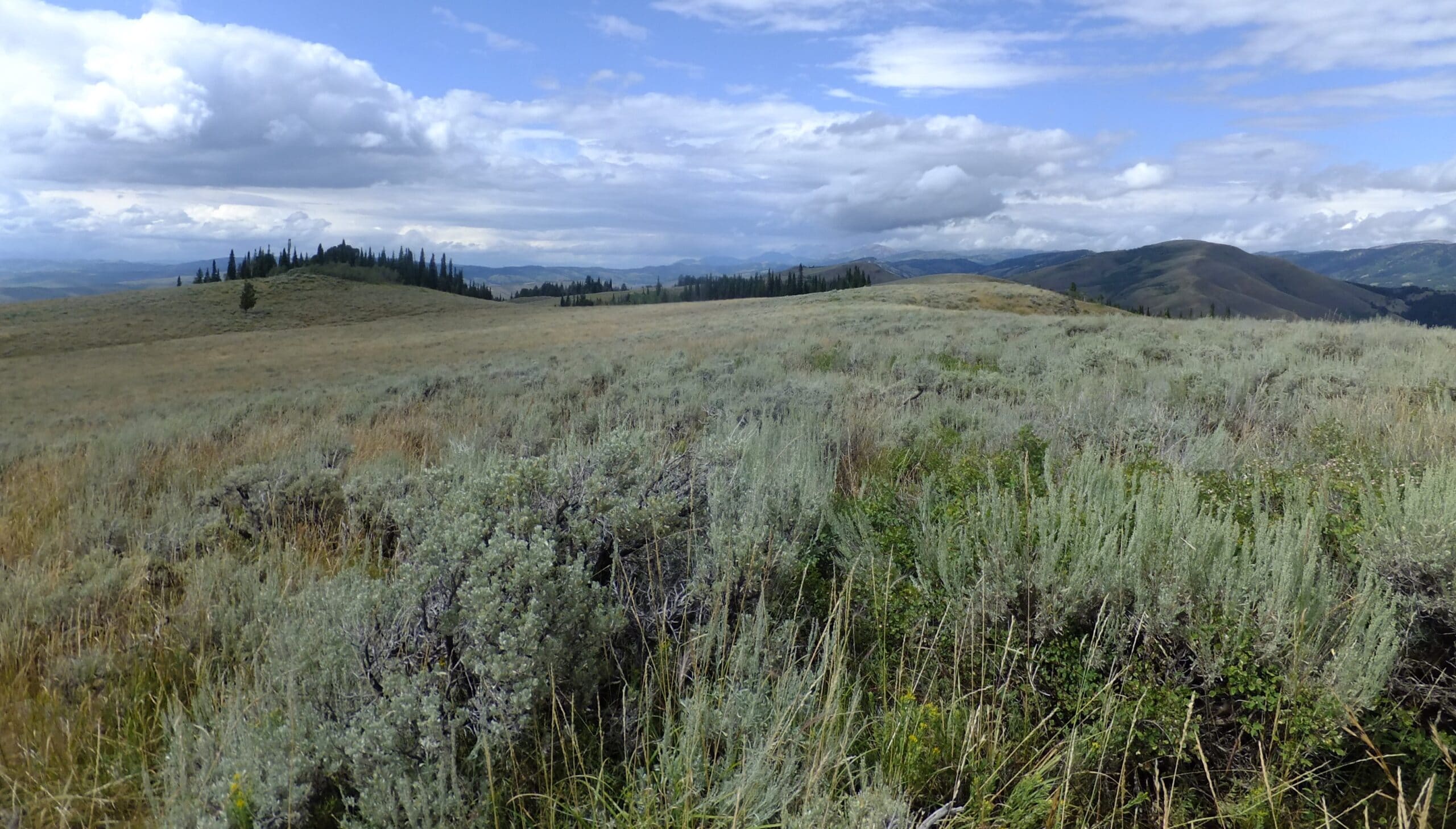Migration—the intrepid, daring, audacious movement of individuals and populations over short and long distances. This global phenomenon can be seen over air in birds and butterflies, through oceans by salmon and humpback whales, and across land by the antelopes of the Serengeti and salamanders. Migration, allowed by the freedom of mobility, has been adopted and adapted by the innate drive of animals to survive.

Deer 180 is one of the millions of animals around the world who migrate. Deer 180 spends her summers in the Hoback, high in the mountains of the Wyoming Range, keeping a watchful eye on the boaters on Snake River and cars along Highway 89. Here she spends the summers eating lush grasses and flowers, raising her fawns, and building up enough fat to help her through the winter. Just before the first heavy snows of the fall, Deer 180 heads down and south. On her way, she probably will encounter a few predators and she’s unfamiliar with the landscape, so it’s a risky move. She also spends a lot of energy and time to move 75 miles down to lower elevations. She and her fawns must cross highways and roads, taking the chance that they will collide with a vehicle going 70 miles per hour. There are multiple highways and roads to cross, especially while cutting through mountain passes.
Why migrate at all?
Migration offers greater access to food, provides a means to avoid harsh seasonal conditions, as well as evading crossing paths with predators, parasites, and disease.
If you’ve ever experienced a Wyoming winter, then you’ll appreciate how deep snow ground cover and freezing high elevation conditions would drive anyone to lower, less snowy areas where plants might be sticking out from the snow.
But the energy and risk are often worth it: she’s able live out the winter nibbling on sagebrush and walking through less snow than if she had stayed at her summer range up high. When the snow begins to melt in the spring, she’ll start to move up and north, returning to her summer range.
But then why not stay in these milder climates at low elevation year-round?
Before too long, over-grazing would reduce and potentially exhaust any food source. Instead, migration allows ungulates to spread their impact out over a broader landscape, often “surfing the green wave” that follows the wave of emerging plants across the landscape as snow melts as the seasons change.
This movement improves access to food and thus improves overall nutrition, which itself benefits reproduction of the individual, as well as the population more broadly.
Although ungulates cannot completely avoid predators, migration does limit path crossing when you consider that denning wolves have significantly reduced times for mobility just after pups are being born. However, moving through unfamiliar terrain can be risky, and ungulates can die from predation along the migration route.
Variations in migration
As a term, migration can encompass a diverse array of movement types that goes beyond the most common notion of annual migration, where animals driven by seasonal changes move to-and-fro across a landscape. It also includes irruptions which are occasional and irregular movement, seen in Snowy Owls, drifts which are influenced by the Earth’s air and sea currents, as seen in loggerhead turtles, and nomadism where paths can change from year to year, as seen in caribou.
Migration affects the broader ecosystem
What our migrating mule deer might not appreciate is the wider impact to the overall ecosystem they have.
The very presence of ungulates can change the ecosystem they are in, and migratory ungulates can spread their effects across a broader landscape than animals that do not migrate. By moving biomass, nutrients, fecal material, and more across landscapes, migrants integrate landscapes that would otherwise be disconnected.
Even in their deaths, migrants play important roles in the ecosystem. Predators are a part of the overall balance to the animal ecosystem, and ungulates provide food for carnivores and scavengers. In some instances, animals dying while migrating can boost nutrients in the environment. Thousands of wildebeest in the Serengeti, for example, drown each year while trying to cross the Mara River. This build-up of carcasses provides food and nutrients for many different parts of the ecosystem, both in water and on land. Before European settlers decimated bison populations in North America, migrating bison would drown in large numbers and change the chemistry of the rivers they were crossing.
In short, maintaining migration is not only important for the animals that migrate, but for the broader ecosystems they live in.
How do we study migration?
How do we know Deer 180 hikes 75 miles to feed, mate, and raise her offspring? Through putting GPS collars on Deer 180 and many other mule deer, researchers have been able to track and study their migration patterns. GPS collars often mark where an animal is every hour on the hour, and researchers can then learn about how they move, where they go, and the risks they face. In some instances, these studies span many years, which is how we learned that Deer 180 has traveled back and forth between Big Piney and the Hoback each year, displaying faithfulness to her migratory route.

So why should we care?
Ungulates in North America have been migrating for thousands, if not millions, of years, and humans have been living alongside them for much of that time. Historical records show that ungulates provided a living for the original inhabitants of North America, who followed the seasonal abundance of animals up mountains and across plains; these hunting practices are still a mainstay of many indigenous economies and cultures. Outside of indigenous cultures, modern-day recreational hunting continues to provide food for the table, and local economies have been and continue to be built on recreation related to wildlife.
Yet, despite this connection, ungulate migration is in danger.
Population numbers over the past decades are still well below recorded numbers early in the century. Marking out protected areas provides only one aspect to conserve ungulates. To truly assist the persistence of this behavior, efforts are now looking at larger landscape connectivity and land-use planning. This involves bringing together stakeholders including private landowners, energy developers, as well as federal and state agencies. By understanding migration corridors, maps can be created to inform planning on forest use, road planning and urban development from local, regional, up to national level to minimize impacts on migration. For the movements that are important to the animals, landscapes, and people in Wyoming and even across the world, seeking these solutions is imperative.
Compendium by Simon Alexander.
Want to learn more? Check out these papers:
Kauffman, M. J., E. O., Aikens, S. Esmaeili, P. Kaczensky, A. Middleton, K. L. Monteith, T. A. Morrison, T. Mueller, H. Sawyer, and J. R. Goheen. 2021. Causes, consequences, and conservation of ungulate migration. Annual Review of Ecology, Evolution, and Systematics, 52:453–478.
Middleton, A. D., H. Sawyer, J. A. Merkle, M. J. Kauffman, E. K. Cole, S. R. Dewey, J. A. Gude, D. D. Gustine, D. E. McWhirter, K. M. Proffitt, and P. White. 2020. Conserving transboundary wildlife migrations: recent insights from the Greater Yellowstone Ecosystem. Frontiers in Ecology and the Environment, 18:83–91.

